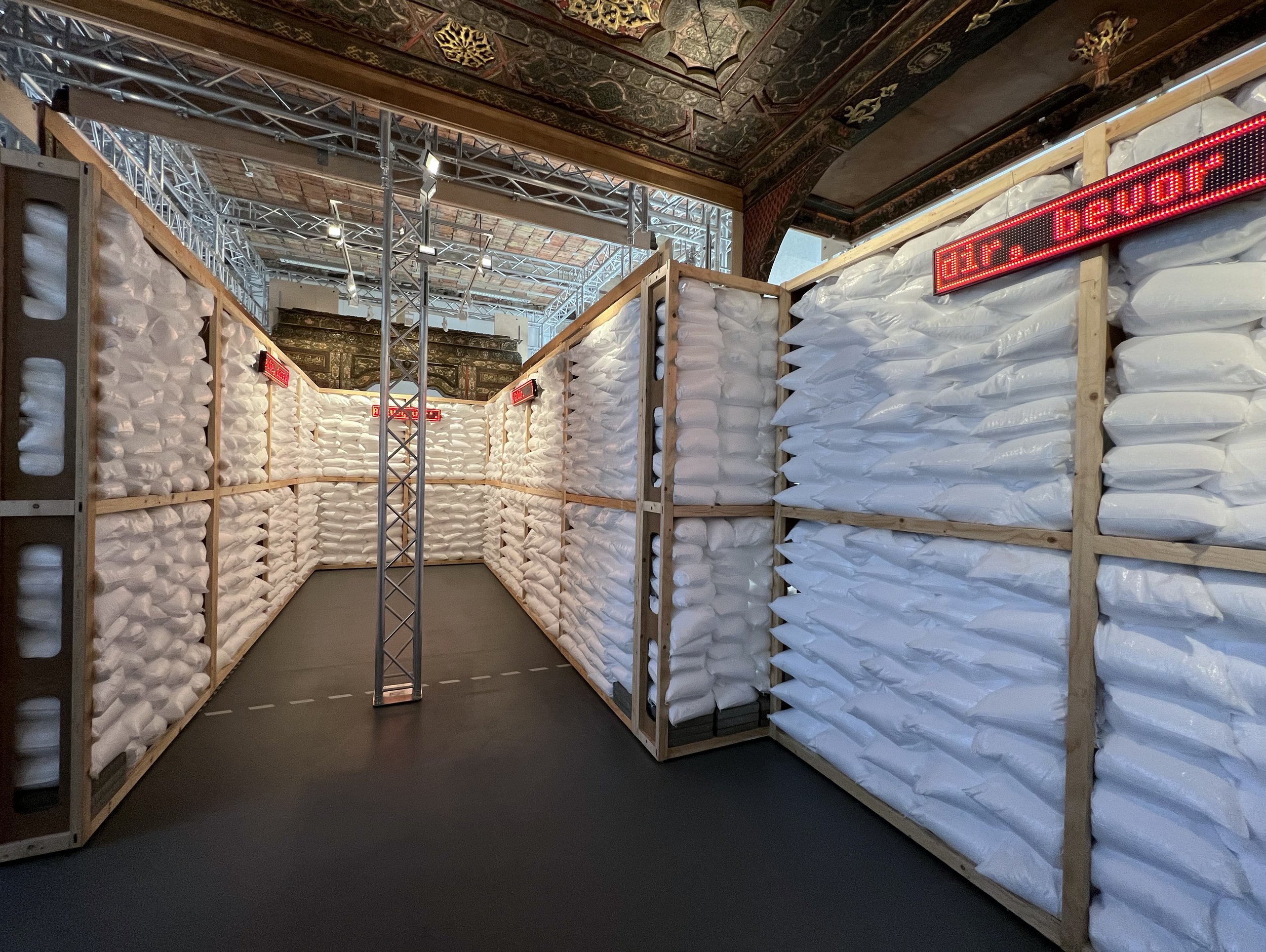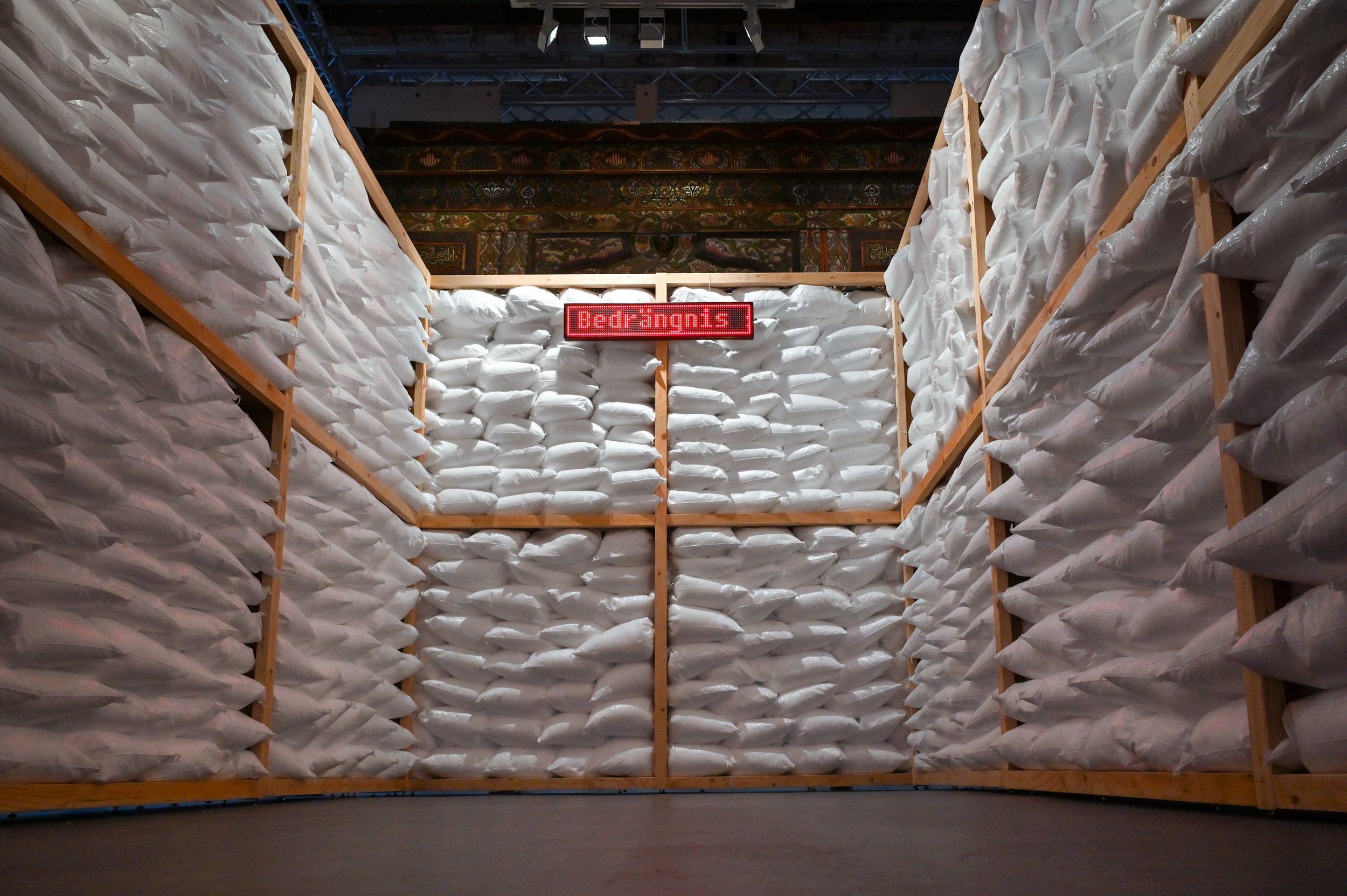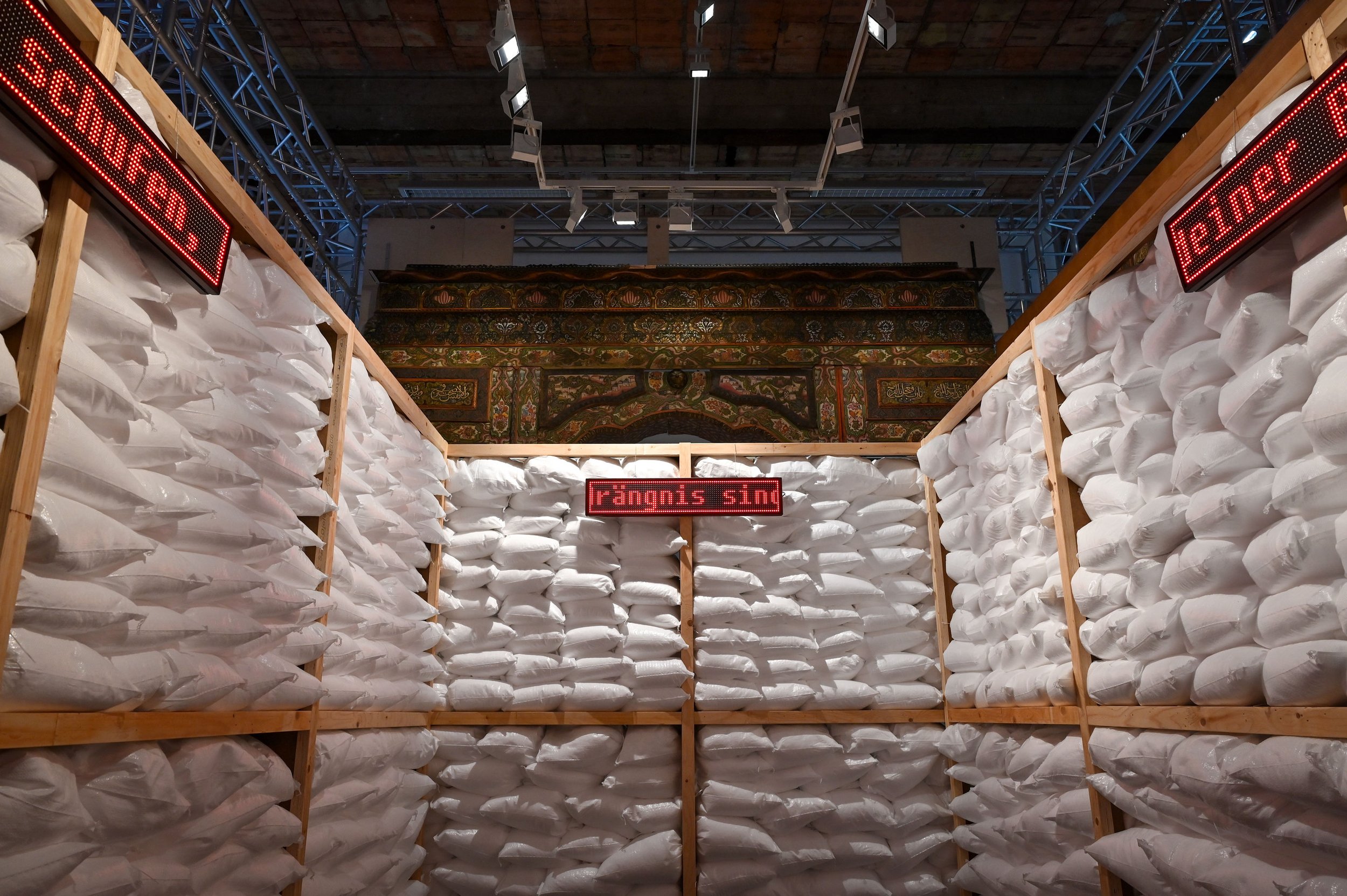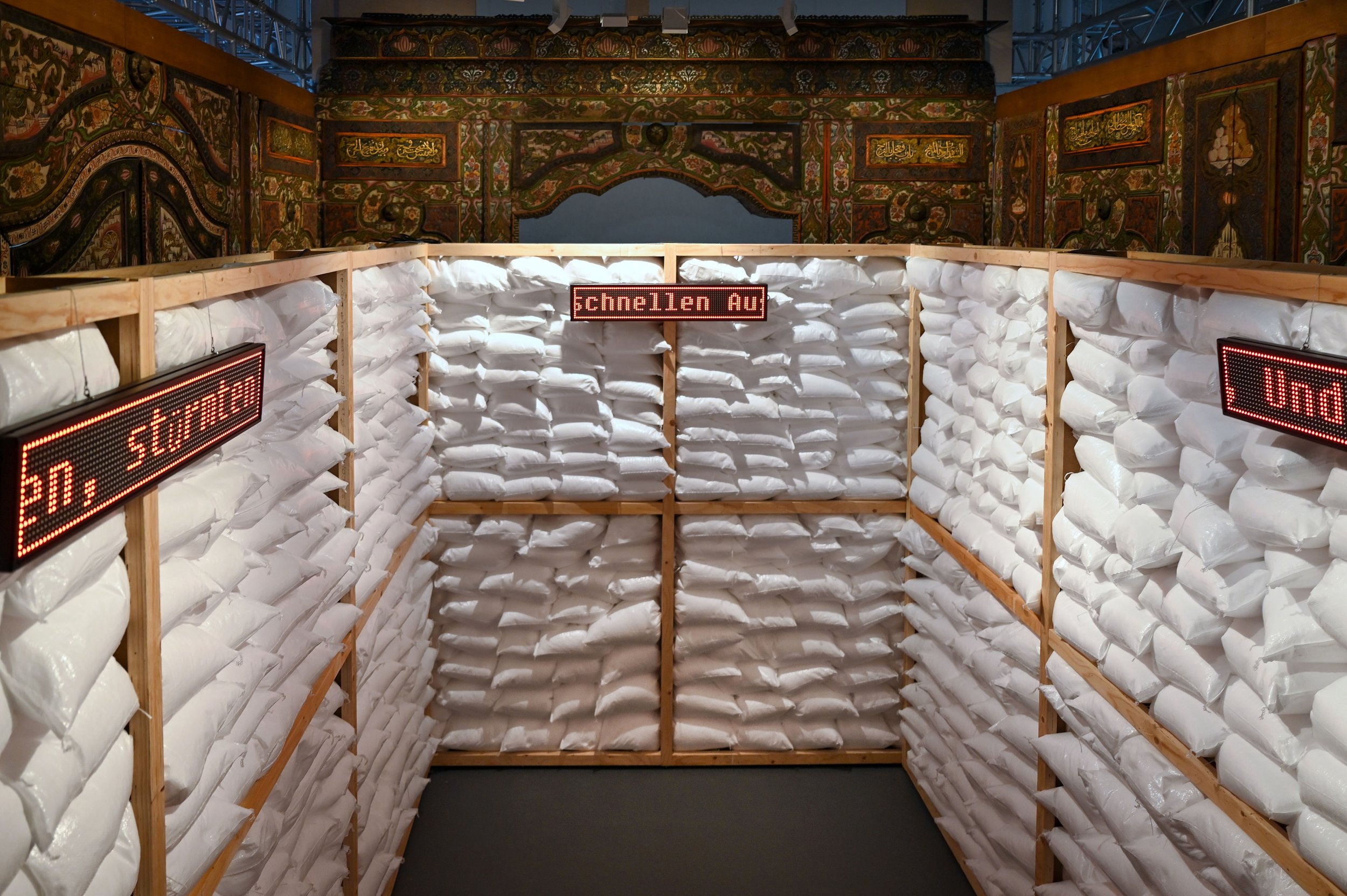A Room Without a Roof
The Damascus Room was recently put on display at the Japanisches Palais in Dresden, Germany, after 25 years of restoration and another 100 years in the attic. But it seems that the room awoke from this sleep unperturbed, untouched by more than a century of wars: great, perpetual, or nascent. Rather than feign timelessness or strive to emulate a time capsule, this work asks how can the display of the Damascus Room be complicit in the urgency of our moment?
For this intervention, the long-awaited, intricately ornamented, and spectacular Damascus Room was entirely sandbagged, leaving only the Arabic inscription visible to the viewers. These 10 calligraphic verses, written by Al-Ghazali, adorn the room’s walls. While often taken as an embellishment, celebrated as a continuation of the image or drawing, these verses hold their own latent meaning. They speak of atrocity and suffering:
Adversity had abolished the hearts,
O Lord, bring apace alleviation!
And the souls are in affliction
In your hands lies resolving the plight.
Translated into German, the verses were displayed on scrolling LED signs. It is as if affliction is embedded in the room’s walls, predicted, and this translational gesture awakens it, casting the room in a different light.





